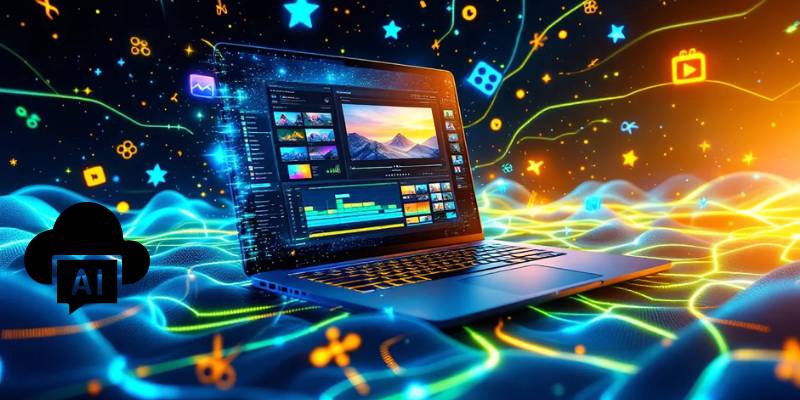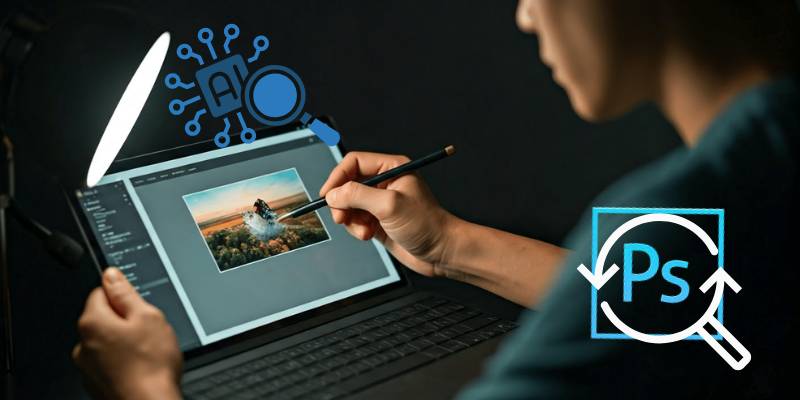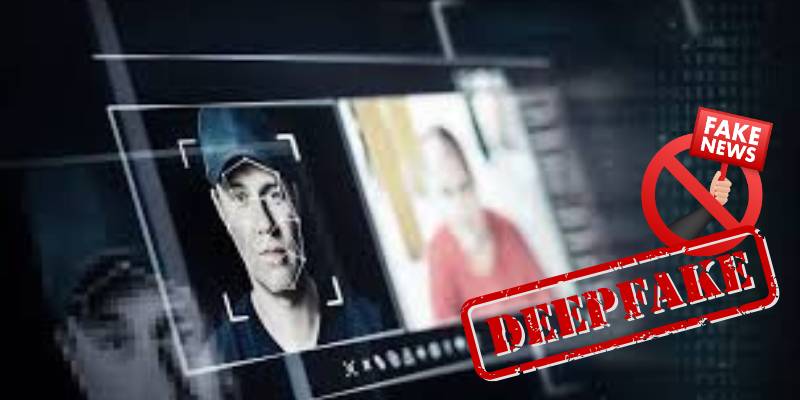I still remember the first time I tried to “edit” a photo. It was on an old Windows desktop, using Microsoft Paint of all things. I had this picture of my dog, and I thought I could make it look sharper by messing around with the contrast slider.
Spoiler alert: it ended up looking like he was glowing in the dark. Back then, unless you had expensive software like Photoshop—and the patience of a saint—photo editing felt like something reserved for professionals, not everyday people like me.
But here we are now, in a completely different world. Today, AI is making professional-quality editing accessible to everyone, whether you’re a teenager trying to spruce up a selfie, a small business owner creating marketing material, or a grandparent restoring old family photos.
What used to require years of skill and training can now be done in seconds, often for free, with tools that are intuitive and surprisingly powerful.
The real question is: should we be excited about this shift, or worried about what it means for creativity, authenticity, and the people who’ve spent lifetimes mastering the craft of editing? That’s what I want to unpack here.
The Old Divide: Professionals vs. Amateurs
For decades, editing photos or generating polished visuals was a specialized skill. Professionals trained in Photoshop, Lightroom, or CorelDRAW. Amateurs? We stuck with whatever filters Instagram or VSCO gave us.
This divide wasn’t just about skill; it was about access. Photoshop licenses cost hundreds of dollars, and tutorials weren’t exactly beginner-friendly. Professionals guarded their expertise like chefs guarding secret recipes. And fair enough—editing was their livelihood.
Now, with AI photo generators view, that wall has been knocked down. Want to remove a background? One click. Want to change the lighting in your photo from noon to golden hour?
A slider. Want to restore a blurry face from an old picture? AI does it in seconds. It’s both liberating and a little unsettling.
From Guide to Generator: How AI Changed the Workflow
If you search for “photo editing tutorials” online, you’ll still find thousands of videos walking you step by step through complicated processes. And they’re still useful—manual control hasn’t gone away.
But AI tools are shifting the experience from guide to generator. Instead of being instructed on how to do something, you just tell the system what you want:
- “Make this photo look like it was shot on film.”
- “Add a mountain background.”
- “Turn this daytime picture into nighttime.”
The AI does the heavy lifting. No masks, no adjustment layers, no wrestling with brush sizes. You get instant results. And while it won’t always be perfect, it’s good enough for the vast majority of people who just want their photos to look polished without spending hours learning how.
The Democratization of Creativity
One of the things I find most moving about this shift is how it’s making creative expression accessible to people who were once locked out.
Take small business owners, for instance. A bakery that could never afford a professional designer can now use AI to generate clean, professional-looking photos for social media.
Or families digitizing and restoring old photo albums—they no longer need to hire specialists to repair cracks and discoloration.
Even students can benefit. Instead of just grabbing stock images, they can use AI tools to craft visuals for presentations that actually feel unique.
It’s worth noting: this democratization doesn’t mean professionals are obsolete. What it does mean is the barrier to entry is lower, and that’s a game-changer.
Top AI Photo Tools Leading the Charge
Let’s talk specifics. A few platforms stand out in this space:
- Adobe Firefly: Adobe’s answer to the AI boom, integrated directly into Photoshop. It allows for generative fills and text-to-image features, with a strong emphasis on ethical AI.
- Luminar Neo: Known for powerful one-click enhancements like sky replacement and portrait retouching.
- Canva: Once just a design tool, now with AI-powered background removal and image generation.
- Runway ML: Popular among creators for both photo and video editing, driven by AI models.
- Fotor and Pixlr: Accessible, browser-based tools for quick edits without a steep learning curve.
These top AI photo tools are different from traditional software because they don’t just give you options—they actively generate results. And that’s a subtle but profound shift.
The Emotional Appeal: Why People Love AI Editing
Part of AI’s appeal is emotional. Editing used to feel intimidating. AI makes it feel playful. You don’t need to know what “dodge and burn” means to make your selfie pop—you just hit “enhance.”
There’s also joy in discovery. I’ve had moments where I typed in a random prompt—like “turn my photo into a 90s Polaroid with neon colors”—and the result made me smile in a way Photoshop never could. It felt like collaboration, not labor.
That emotional spark matters. Creativity isn’t just about results; it’s about the feeling you get along the way.
Dark Trends Emerging
But we can’t ignore the dark trends either. The same tools making editing accessible are also being used to manipulate reality in harmful ways.
- Deepfakes: AI can convincingly edit faces into places they were never meant to be, raising ethical and legal nightmares.
- Over-Reliance on Automation: People may stop learning the craft, assuming the machine always knows best.
- Homogenization: When millions of people use the same AI filters, creativity risks becoming formulaic.
- Misinformation: Fake images spread quickly, eroding trust in what we see online.
It’s not just about editing selfies anymore. It’s about how easily reality can be bent, and whether society is ready to handle that.
Statistics and Market Growth
Let’s step back and look at the numbers.
- The global AI in photo editing market is projected to grow significantly, with AI imaging tools already attracting millions of users monthly.
- According to Statista, the broader AI market is expected to surpass $1.8 trillion by 2030 (Statista). A sizable chunk of that will come from creative industries.
- A Pew Research Center study in 2023 found that 60% of U.S. adults worry about AI-generated misinformation, reflecting the tension between convenience and trust.
The growth is undeniable, but so are the concerns.
Professionals: Threatened or Empowered?
This is the elephant in the room. What happens to professional editors when AI does in seconds what used to take them hours?
Some feel threatened—and understandably so. If a business can use AI for free, why pay a freelancer? But others see opportunity. Professionals can now spend less time on grunt work and more time on high-level creativity.
I think about it this way: calculators didn’t kill math, but they changed how we value it. Maybe AI will do the same for editing—shifting the professional’s role from technician to visionary.
Case Studies: Real-World Examples
- E-commerce: Online retailers use AI to generate endless product variations (different colors, backgrounds, styles) without reshooting.
- Journalism: News outlets experiment cautiously with AI to clean and enhance images, though they’re wary of crossing ethical lines.
- Social Media Influencers: Many influencers already admit to using AI filters to maintain a polished brand identity.
The common thread? AI is being woven into workflows across industries, not as an optional add-on but as a necessity to stay competitive.
Personal Opinion: Where I Stand
I’ll be honest—I have mixed feelings. On one hand, I love that my niece can create a stunning graphic for her school project without having to wrestle with Photoshop for hours.
On the other hand, I worry about a future where authenticity is impossible to verify, and everyone’s images look algorithmically polished to the same standard.
What I don’t believe, though, is that AI will kill creativity. Humans have always adapted to new tools, from the camera itself (which painters once feared) to digital editing. We’ll adapt to this too. The real question is whether we’ll adapt responsibly.
Looking Ahead: What’s Next
Here’s where I think things are heading:
- More Personalization: AI will learn your style and auto-edit photos to match.
- Greater Transparency: We may see watermarking or “AI disclosure” requirements to combat misinformation.
- Hybrid Workflows: Professionals will mix manual editing with AI speed to get the best of both worlds.
- New Ethical Standards: Society will need to agree on where the line between editing and manipulation lies.
The future isn’t about choosing between AI and traditional editing—it’s about learning to use both wisely.
Closing Thoughts
AI has cracked open the gates of professional-quality editing, and there’s no going back. What once felt like a skill reserved for an elite few is now accessible to anyone with an internet connection. That’s powerful, exciting, and a little scary all at once.
As with any technology, we’ll see both positive and negative consequences. We’ll celebrate how it democratizes creativity, while grappling with its potential to spread misinformation and flatten originality.
But if history has taught us anything, it’s that humans don’t stop creating just because the tools change. We adapt, we question, we push forward. AI won’t kill photo editing—it’ll reshape it.
And maybe, just maybe, it’ll remind us that creativity isn’t about the tools at all. It’s about the stories we’re trying to tell.


